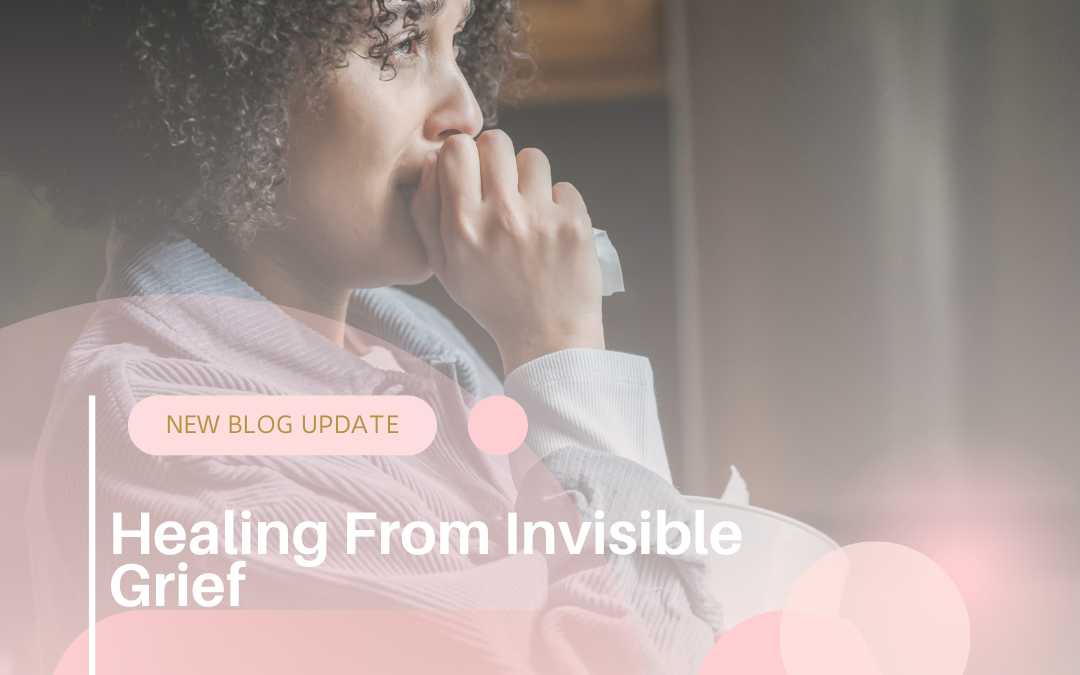Grief usually brings to mind funerals, condolences, and public mourning. But not all grief comes with a death or a ceremony. Some grief is quiet. It doesn’t have a name, a timeline, or a support group. It lingers in the background of your life, unspoken and unseen.
This is invisible grief—a term that describes the kind of loss that doesn’t get acknowledged by society, but still leaves a deep emotional impact.
What Is Invisible Grief?
Invisible grief (sometimes called disenfranchised grief) refers to the mourning of something that others may not recognize as a legitimate loss. It can include:
-
Grieving the childhood you never had because of abuse, neglect, or instability
-
Mourning the life path you imagined—like not having children, not reaching a dream, or a career that didn’t happen
-
The loss of a relationship that ended without closure, like estrangement from family or friends
-
Feeling grief over a trauma that changed you
-
The sorrow of being unseen or misunderstood, especially for those navigating chronic illness, identity struggles, or mental health issues
-
Grieving a version of yourself—who you were before the pain, before the diagnosis, or before the world told you to shrink
These losses are rarely validated by others, which makes them incredibly lonely. But they’re real. And they deserve attention.
Why This Grief Hurts So Deeply
😶 There’s No Space to Talk About It
Because it’s not widely acknowledged, invisible grief often gets buried. You may feel ashamed for still “holding on” to something others see as insignificant. That silence can intensify pain.
💔 There’s No Ritual or Closure
Unlike traditional grief, these losses don’t have funerals, rituals, or cultural moments to mark their significance. You’re left carrying the weight alone, without a clear path to healing.
🧠 It Can Lead to Complicated Emotions
Invisible grief can show up as depression, anxiety, resentment, or even perfectionism. You may not even recognize you’re grieving—you just know something feels heavy and unresolved.
What This Grief Might Sound Like in Your Head
-
“Why can’t I just move on?”
-
“I should be over this by now.”
-
“No one would understand if I said this out loud.”
-
“I feel guilty for being sad about this.”
These thoughts are signs that your grief needs gentleness, not judgment.
How to Begin Healing
📝 Name the Loss
Start by writing down what you’re grieving. Give it form. “I’m grieving the mother I never had.” or “I’m grieving the version of me who was full of hope.” Naming it can be powerful.
🎧 Talk to Someone Safe
Whether it’s a therapist, a friend, or a support group, sharing your grief aloud—even just once—can be incredibly validating. You’re not weird or broken for feeling loss over something that others don’t see.
🕯️ Create Your Own Rituals
Light a candle, write a letter to your younger self, plant something, create a playlist, or visit a meaningful place. Ritual gives grief a container—it tells your heart, this matters.
⏳ Let It Be Ongoing
Grief doesn’t follow a straight line. You don’t have to rush it or package it neatly. Some losses will visit you again and again—and that’s okay. Healing is not about forgetting; it’s about integrating.
Final Thoughts
Invisible grief may not come with sympathy cards or casseroles, but it deserves compassion and care. You are allowed to grieve things that never happened, relationships that never healed, or pieces of yourself that feel lost to time.
Just because no one sees it doesn’t mean it’s not real.
And just because it’s invisible to others doesn’t mean you have to carry it alone.


Recent Comments